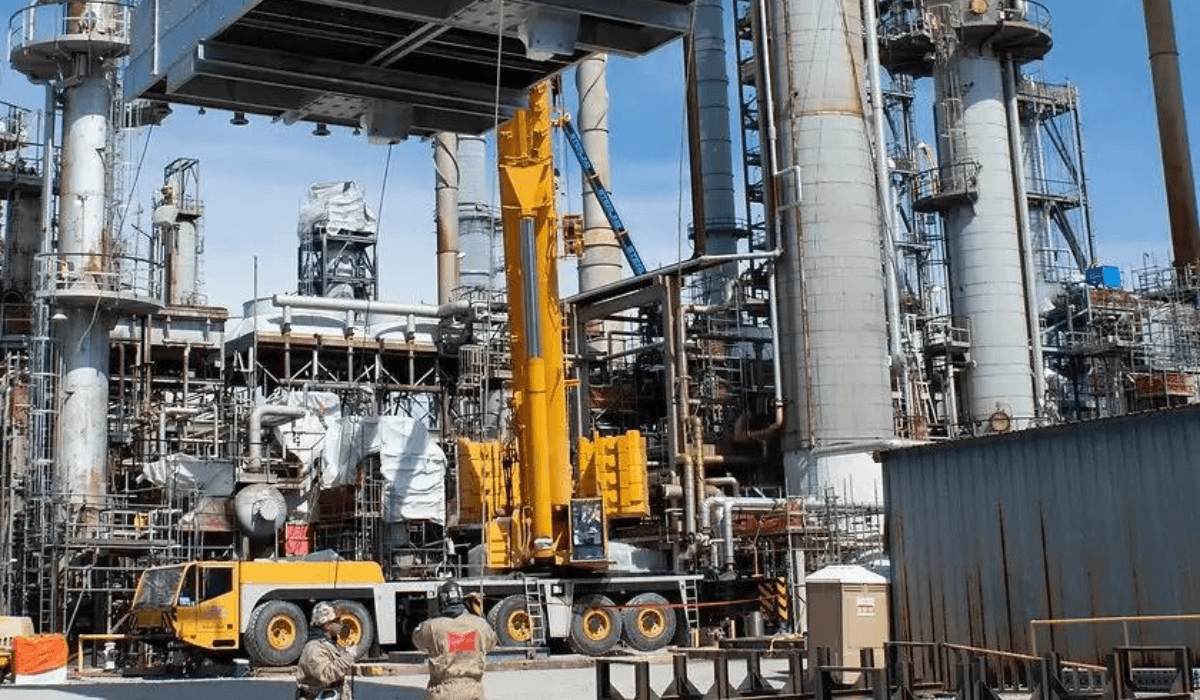
Plant turnarounds are critical events in the industrial world, allowing facilities to undergo necessary upgrades, repairs, and maintenance. However, these processes are not without their challenges. Check out our emergency field services.
With Scheduled and Emergency Turnaround services being one of our specialties, we'll review the five essential phases of a plant turnaround process and highlight the key challenges associated with each phase. By understanding these challenges, companies, like ParFab, can enhance their approach to turnaround services and ensure successful outcomes.
1. Scoping Phase
Defining the Scope
The initial phase is in a turnaround is known as the scoping phase, which involves foundational planning. This phase encompasses the determination of crucial elements such as the time frame, budget, and specific details regarding the assets that will be affected and those earmarked for deferred outage. The success of the turnaround heavily relies on understanding and accurately defining the scope during this stage.
During the initial scoping process, maintaining both the broad overview and a clear, detailed focus becomes paramount. Understanding the requirements for each specific pipe, valve, or machine is crucial. This entails conducting thorough due diligence and devising a preparation plan that includes estimates of costs, schedules, work lists, limitations, and the resources essential for successful turnaround execution. Once all this detailed information is collected, it becomes the foundation for plan approval and dissemination across the organization.
The primary challenge in the scoping phase lies in the reliance on past experience or expectations. Often, pertinent data is missing, making it unfeasible to construct a comprehensive plan. For instance, numerous facilities lack operating parameters that would offer insights into the performance of key equipment. Similarly, equipment condition data might be severely limited, leaving them unaware of their equipment's appearance and operational status. This means that scoping frequently relies on aspirations and assumptions rather than concrete data and accurate calculations, which can be a dangerous starting point.
2. Preparation Phase
Planning for Success
Once the scope has been established, the subsequent phase involves preparation, which represents the most time-intensive stage of the turnaround process. The data collected during the scoping phase becomes the bedrock for plan definition and seamless coordination, which entails tasks like updating engineering records, generating work orders, and enlisting the expertise of subcontractors.
A significant challenge encountered during this phase stems from dealing with outdated historical data, encompassing obsolete engineering records, inadequate communication, and fragmented information sources. This situation arises for several reasons. For instance, diverse specialized trades such as welders (see specialty welding & turnarounds), electrical teams, mechanics, and pipefitters often need to schedule various work orders. Furthermore, engineering data may require updates from multiple contractors. Consequently, the data becomes fragmented, scattered among maintenance, engineering departments, and various contractors.
As a consequence, building a comprehensive, cross-functional grasp of the tasks at hand and the precise sequence crucial for safety, rework reduction, and the establishment of genuine critical paths within project plans becomes a challenge. These challenges have the potential to result in minor to significant delays, impacting either the execution timeline or even the overarching scope of the project itself.
3. Execution Phase
Turning Plan into Action
The execution phase begins immediately following the plant shutdown, involving the active implementation of work orders, the mobilization of contractors, and the deployment of on-site workers. The timeframe to execute a turnaround project will solely depend on the project's complexity and nature.
The preparation accomplished in phase two is designed to eliminate surprises and prevent unforeseen downtime. This ensures a clear understanding of the necessary tasks, reducing the likelihood of any deviations. Upon completion of each task within the execution phase, a critical step involves testing and validating the readiness of the asset for a seamless return to operation. The objective is to ensure that every asset is at least as proficient, if not improved, compared to its state at the outset of the turnaround, optimizing industrial performance.
The execution phase is marked by its frenetic nature. Common challenges encountered during this phase encompass limited experience, inadequate coordination, and impromptu decision-making. Consider this: the effectiveness of replacing or reusing equipment is heavily reliant on the workforce's familiarity with these assets. In cases where these workers lack experience, such as temporary contractors or external hires, the essential information required for executing the turnaround might be deficient.
4. Start-Up Phase
Transitioning to Normal Operations
The start-up phase marks the implementation of the start-up plan to resume normal operations. Prior to the actual start-up, a final inspection is conducted. This inspection involves operations personnel, maintenance teams, and designated third-party participants assessing the preparedness to recommence operations.
Despite the appearance that most of the work has been completed at this juncture, the start-up phase often presents a host of challenges. Notably, a significant number of incidents occur during this phase. The primary concern here arises from the introduction of new procedures that need to be executed for the first time. Coupled with an environment characterized by uncertainty, unfamiliar processes, and a surge of data, this phase becomes a potential breeding ground for mishaps.
Ensuring that these procedures are accurately followed or that individuals are adequately trained to carry them out can pose a considerable challenge. Navigating the start-up phase demands meticulous attention to detail, thorough training, and clear communication to avert potential disasters and ensure a safe and efficient resumption of operations.
5. Review Phase
Learning for the Future
In the aftermath of a turnaround completion, many organizations also undertake a review phase.This review phase encompasses activities such as reporting, analysis of system performance, and comprehensive discussions about the entirety of the shutdown planning process. Does the system align with expectations? What valuable insights have been gained from the operational phase? These are the questions addressed during this conclusive review phase, aiming to refine and optimize processes for the future.
The review phase poses its own set of challenges, including potential data gaps and the presence of undefined or unquantifiable Key Performance Indicators (KPIs). At this juncture, you might discover that the data required for an accurate review is incomplete. Questions like the duration of work orders, the frequency of work order rescheduling, and instances of technicians encountering lock-outs may lack comprehensive data.
The commencement of the turnaround process usually involves a cost-benefit analysis. However, it's crucial to determine if all the elements required for a comprehensive analysis are in place. Can KPIs be effectively tracked, and can the insights gleaned from this data be applied to learning from the experience? Frequently, the response is negative, resulting in a review that falls short of the desired satisfaction level.
ParFab Scheduled and Emergency Turnarounds
As ParFab Companies, a dedicated specialist in field services like Scheduled and Emergency Turnarounds, we understand the unique challenges encountered in each phase of the turnaround process. Our certified and highly trained team possesses expertise in a spectrum of essential disciplines, encompassing total project management, execution estimating, meticulous planning and scheduling, stringent cost controls, sub-contract management, materials management, and seamless logistics coordination.
These challenges resonate deeply with us, and we're pleased to emphasize that a multitude of these hurdles can be effectively surmounted through the application of industry-leading best practices and cutting-edge tools that we've consistently witnessed and integrated into our operations.
Interested in our turnaround services? Contact us today.
*Ask us about Alkylation Turnarounds and Shutdowns!
References: https://website.maintenanceconnection.com/resources/blog-posts/understanding-5-phases-plant-turnaround-process


